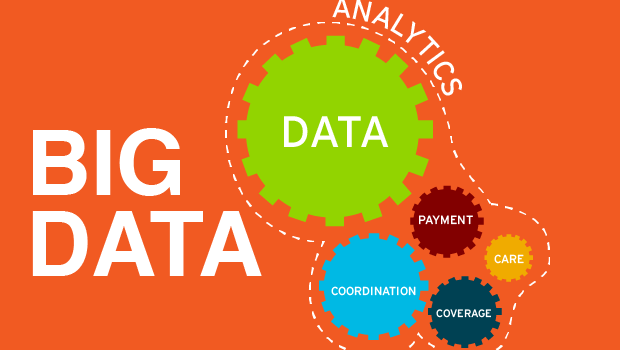
Revolutionize the Business trends and consumption patterns is one of the most sought after troves of wisdom in the business world. The scientific way of doing that is to parse through vast volumes of statistical and historical data, also termed as Big Data.
Businesses across the world have always wanted to procure insights from historical data to make smarter, better and real-time decisions. It is this demand for data and information that has triggered the growth of big data platforms and tools. Big data will basically change the way companies, whether big or small, operate and compete. Revolutionize the Business that invest and extract value from their data would have a clear advantage in the market over their competitors. As computing resources evolve, businesses would reap more benefits from big-data and analytics.
A recent A.T. Kearney IT study says that over 46 percent of firms have implemented a big-data initiative in the past 18 months. Further IT researches estimate that well above 85 percent of Fortune 500 companies would implement one big-data initiative within a year. Building capabilities and effective use of big data will not only augment performance and productivity in conventional functions and segments but also create effective opportunities to expand service and product offerings.
Big Data Transforming Business Models
Big data will propel competitive advantage for companies all over the world. For many Revolutionize the Business, the insights derived from big data have resulted in sustainable and profitable growth in three key areas: operations, product innovation, and customer acquisition and retention.
Operations
Supply chain data provides various data-rich interactions such as physical product movements that are captured through micro-sensors and radio frequency identification (RFID). For example, Airbus’ Value Chain Visibility scheme uses conveyors, motion sensors, and RFID readers to monitor asset movements, materials, and processes in real-time. The scope spreads across in-service partners, customers, manufacturing sites, and suppliers; resulting in lower costs, improved productivity, and reduced inventory.
A retail chain uses comprehensive stock keeping unit (SKU) inventory data for identifying overstocks at a particular store that can be sold in other stores. Its previous fast-reverse logistics approach may only identify top 50 or 60 overstocked SKUs, whereas its big data approach takes entire dataset, creating an extensive SKU model across several stores. Now, the retail chain quickly moves millions of dollars in overstocks to other stores and has built an effective model of distribution based on careful analysis with the help of big data to restrict overstocking. Moreover, the chain captures loyalty card, promotion, and pricing data to create deeper insights into when, why, and what their consumers buy.
Product Innovation
Big data opportunities can be seen emerging across the globe to collect and systematize data from several sources or accumulate offline information. Data if captured and organized properly can enable established and new companies to improve their products, services, and generate revenue in new ways. American multinational company, General Electric, plans to develop new connected equipment, including generators, CT scanners, jet engines and power plants armed with sensors, which will be able to dispatch terabytes of data through internet back to engineers. GE is planning to use that data to make its services and products more efficient, which in turn, would save its customers millions of dollars annually.
Crowdsourcing and social product innovation methods are made possible with the assistance of big data. Now, it is possible to transform millions of tweets into insights on services and products that resonate with customers. The core of this work is to use sophisticated computational linguistics to carry out sentiment analysis on the firm’s product range and its consumers. The resulting output would inform product innovation and product marketing strategies.
Data and the associated analytics are becoming independent products. Analytics and technology firms provide useful insights from large volumes of structured and unstructured data. For instance, compiling and assessing transaction data between suppliers and retailers. Retailers owning this data along with the analytics can use to improve business operations, provide additional services and products to consumers, and replace third-party members or organizations that presently provide these services, hence generating new revenue streams.
Customer Acquisition and Retention
Big data actually puts customer at the core of corporate strategy. Companies and Revolutionize the Business are flooded with consumer data from online communities, websites, and third-party and government data banks. Furthermore, users share almost 32 billion pieces of data or content every day on social media platforms such as Twitter, Facebook, LinkedIn, Instagram, etc. Through big data, it is possible to bring social media feeds together with different sources, including cultural events, weather data and internal data in the form of customer contact information. In addition, advanced analytics tools will allow effective, faster and cost-effective processing and quickly create potential to develop new insights.
An Asian bank examines customer calls to collate true sentiments, while an American bank analyzes social media activities in order to identify risk customers. This kind of fact or opinion gathering would capture direct feedback and avoid innate bias of consumer surveys. At the same time, it will develop performance and customer targets quickly. Now, companies do not need to wait for weekly, monthly or yearly reports to determine business strategies.
Similarly, US-based retailer Macy’s uses big-data in order to create customer-centered assortments. Earlier, the company analyzed data points such as price promotions, out-of-stocks and sell-through rates within the merchandising system. However, with big data, Macy’s can easily evaluate these data points at SKU or product level at particular location on a given time and then generate several scenarios to ascertain the prospect of selling a product or service at a certain place and time – eventually optimizing assortments by time, location, and profitability.
Conclusion
Once companies start leveraging big-data for extracting insights for their Revolutionize the Business, the actions they take have the capacity to revamp businesses. If a marketing team can gain instant feedback or comments on a latest branding campaign by assessing social networking conversations and blog comments, do customer surveys and focus groups become obsolete? Companies that are quick to understand the real value of big data would not only challenge their competitors, but might also define the way business is conducted in their Industry. Customer relationships would undergo transformation as businesses strive quickly to understand concepts and notions that previously could not be ascertained or captured, such as brand perception and sentiment.
Stay tuned for the next part of this blog series.
Planning to acquire data from the web? We’re here to help. Let us know about your requirements.




















